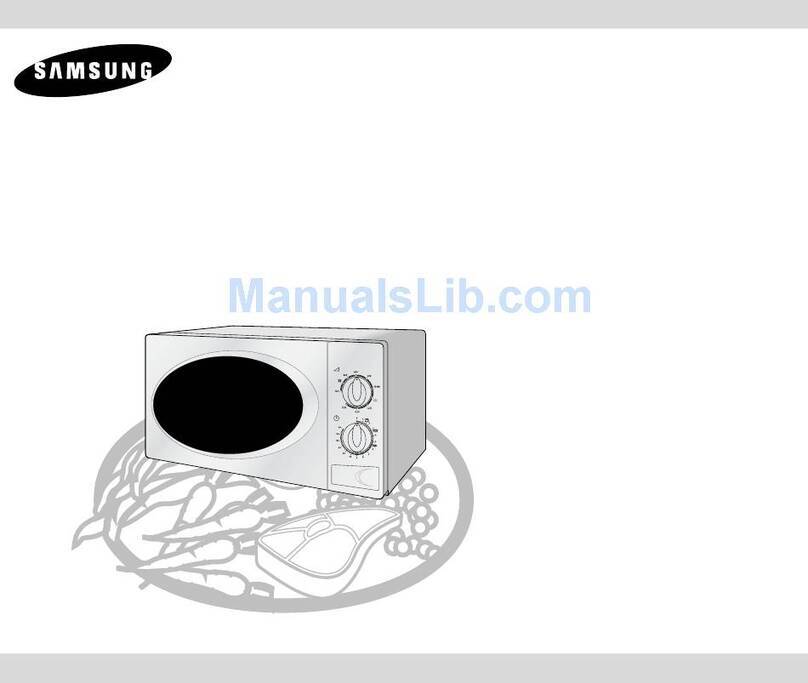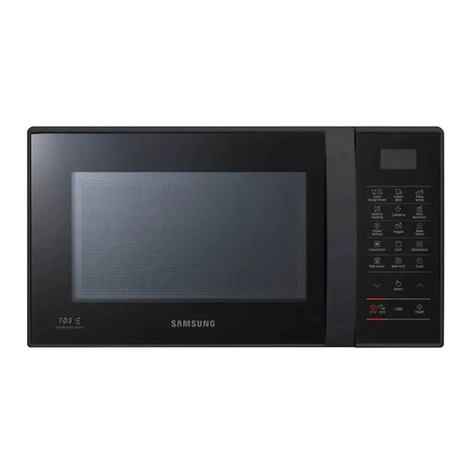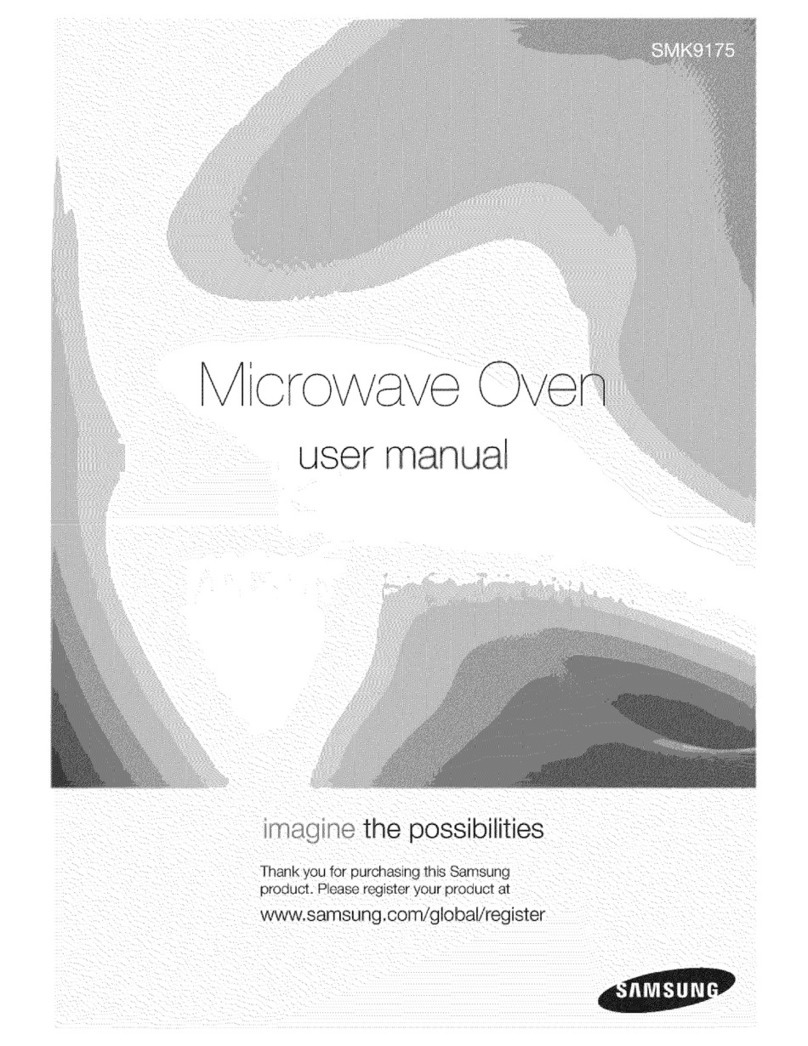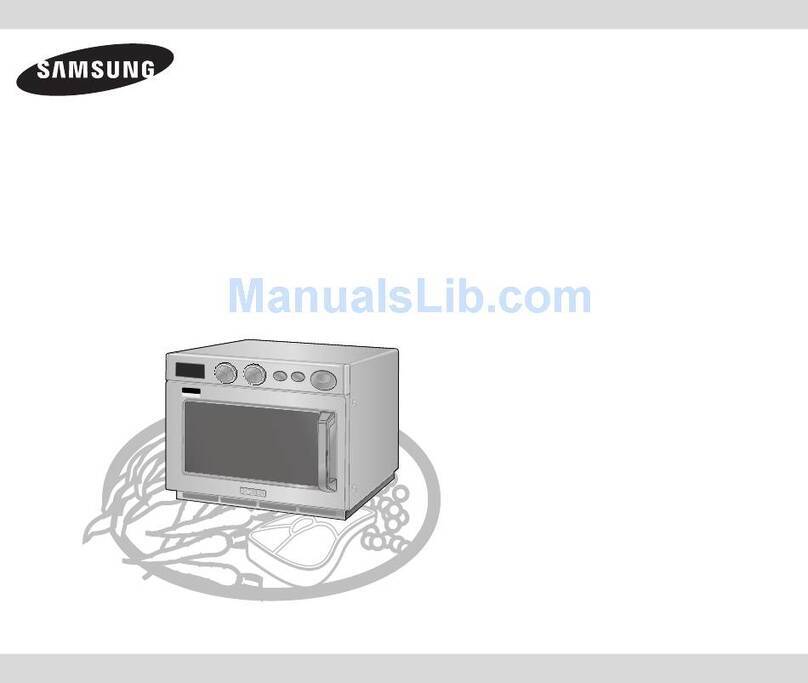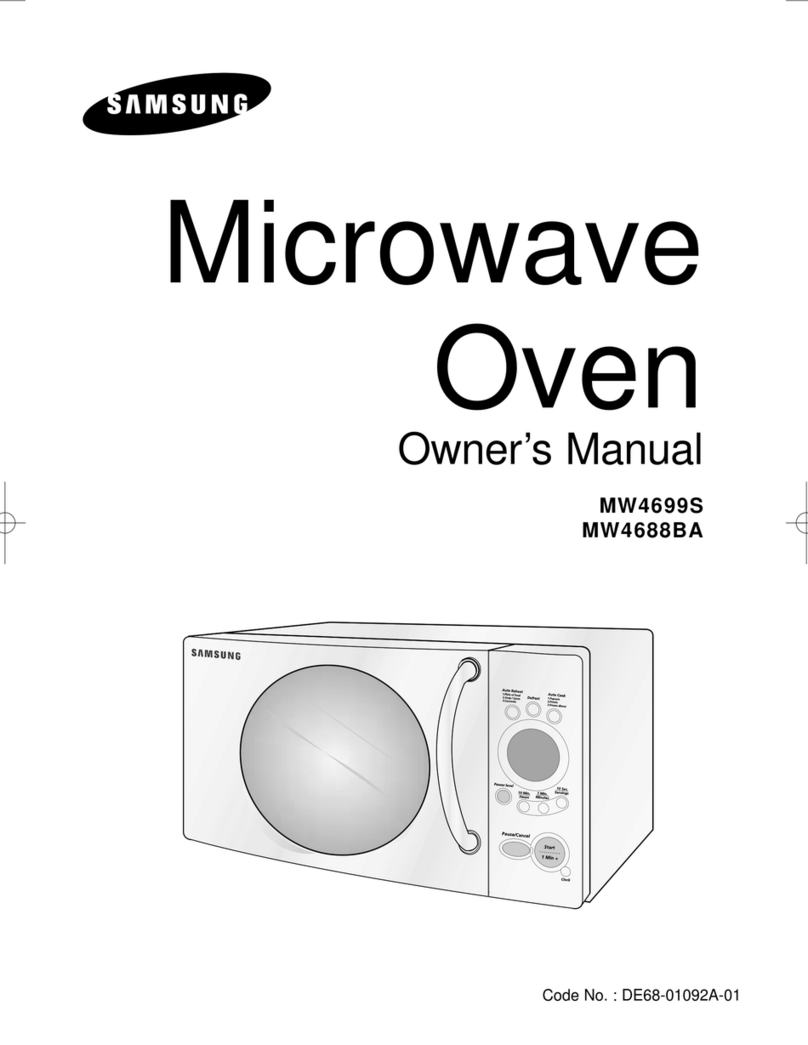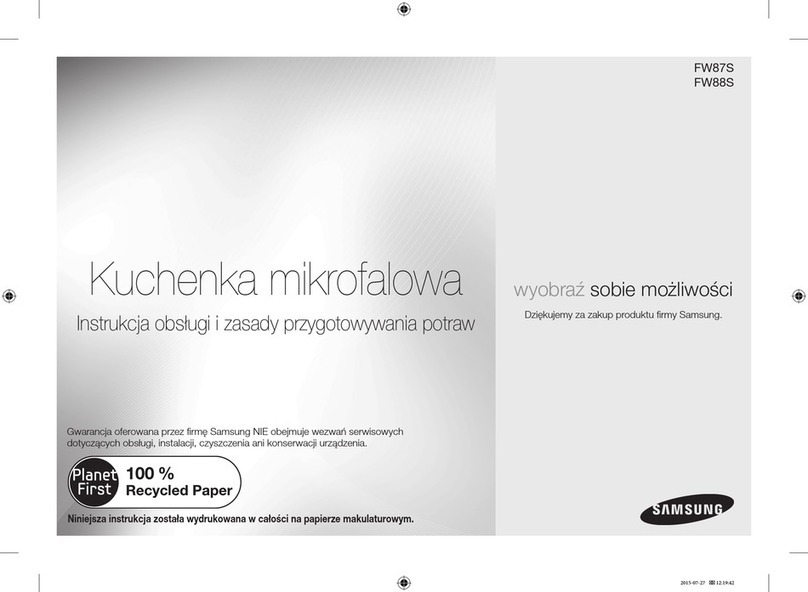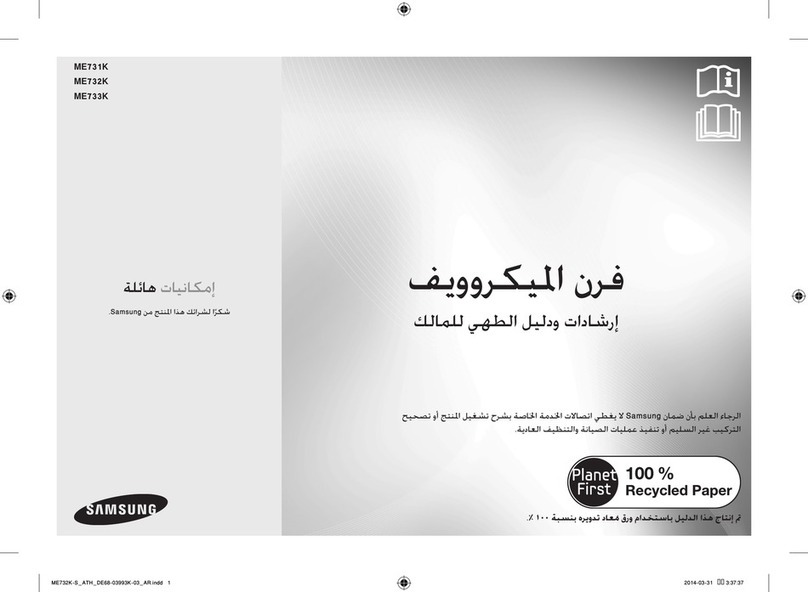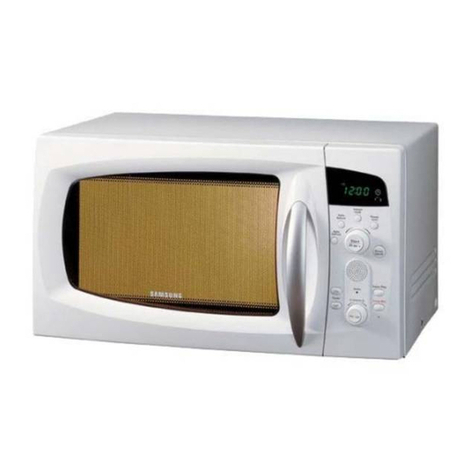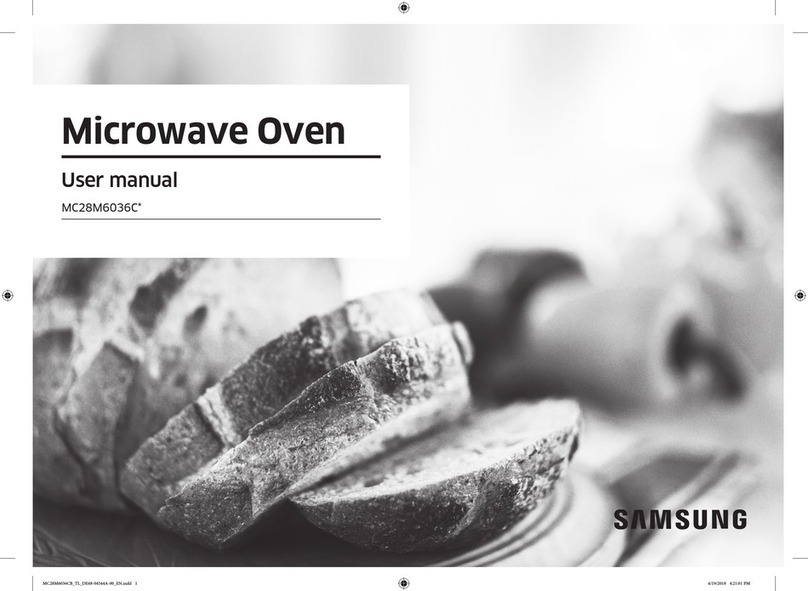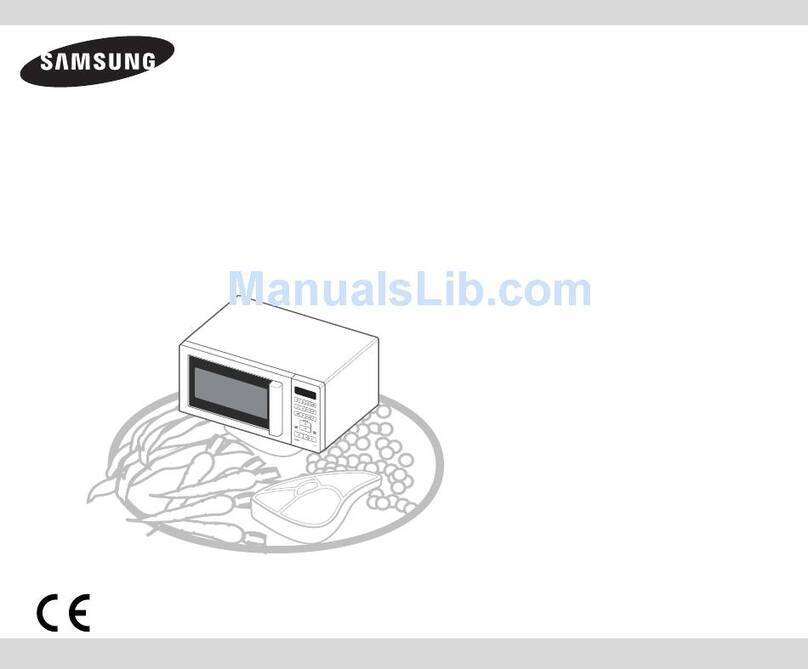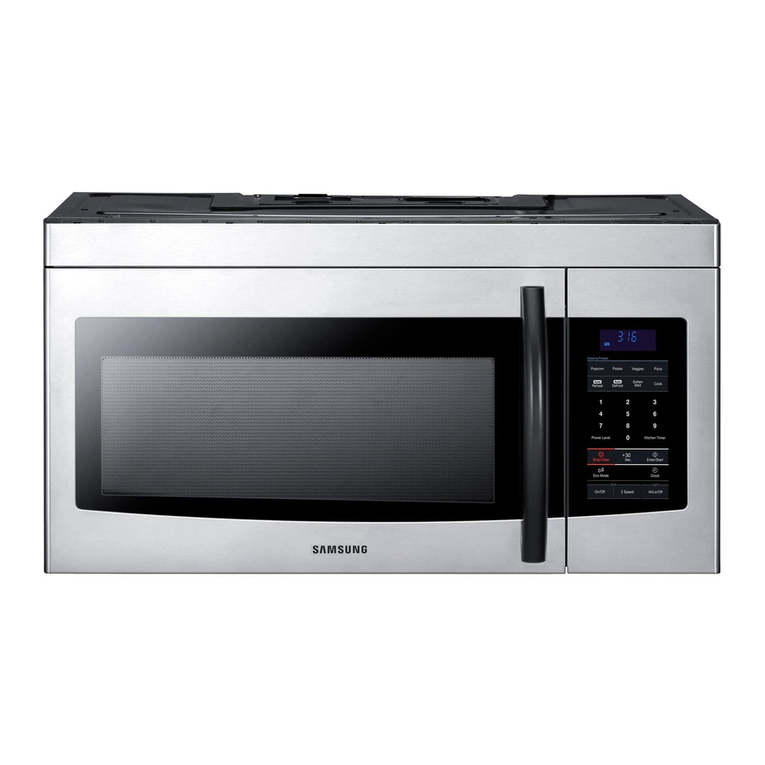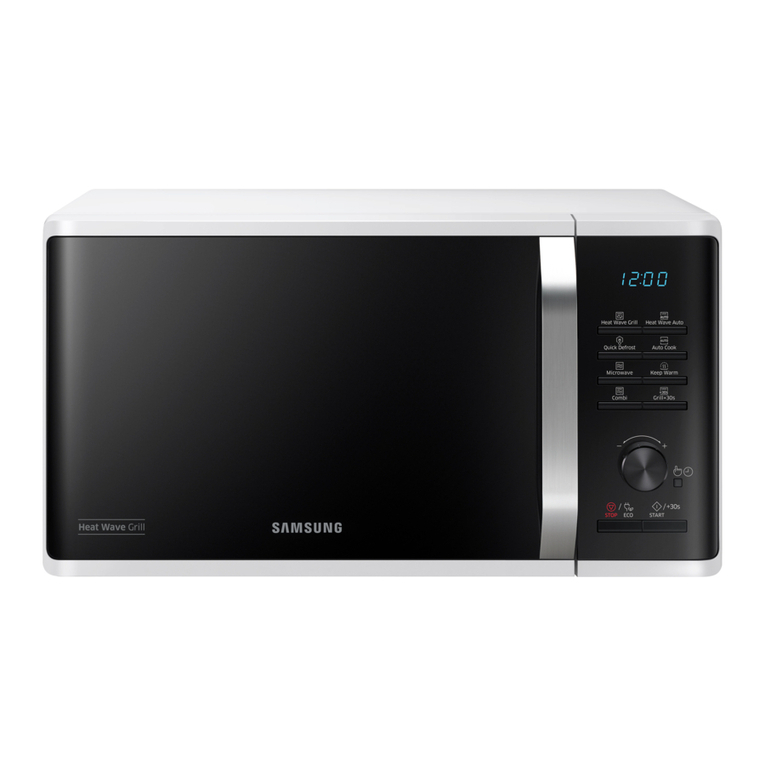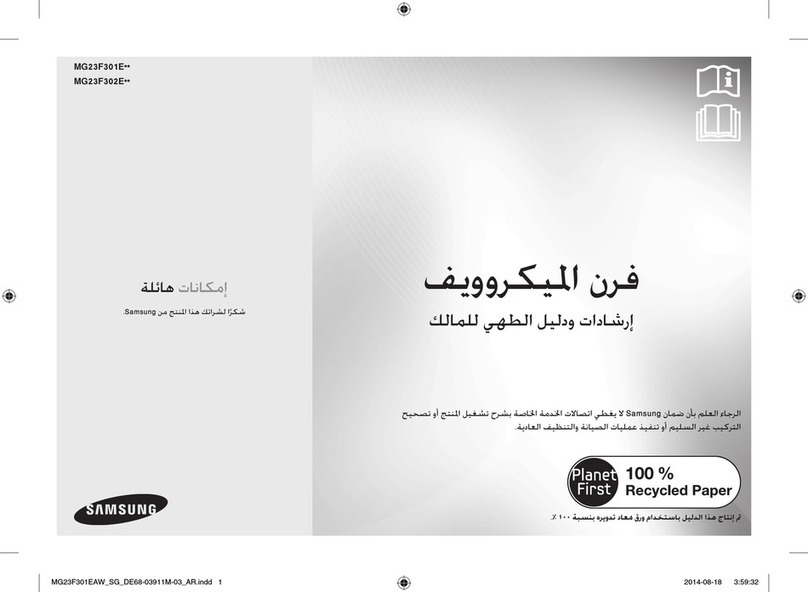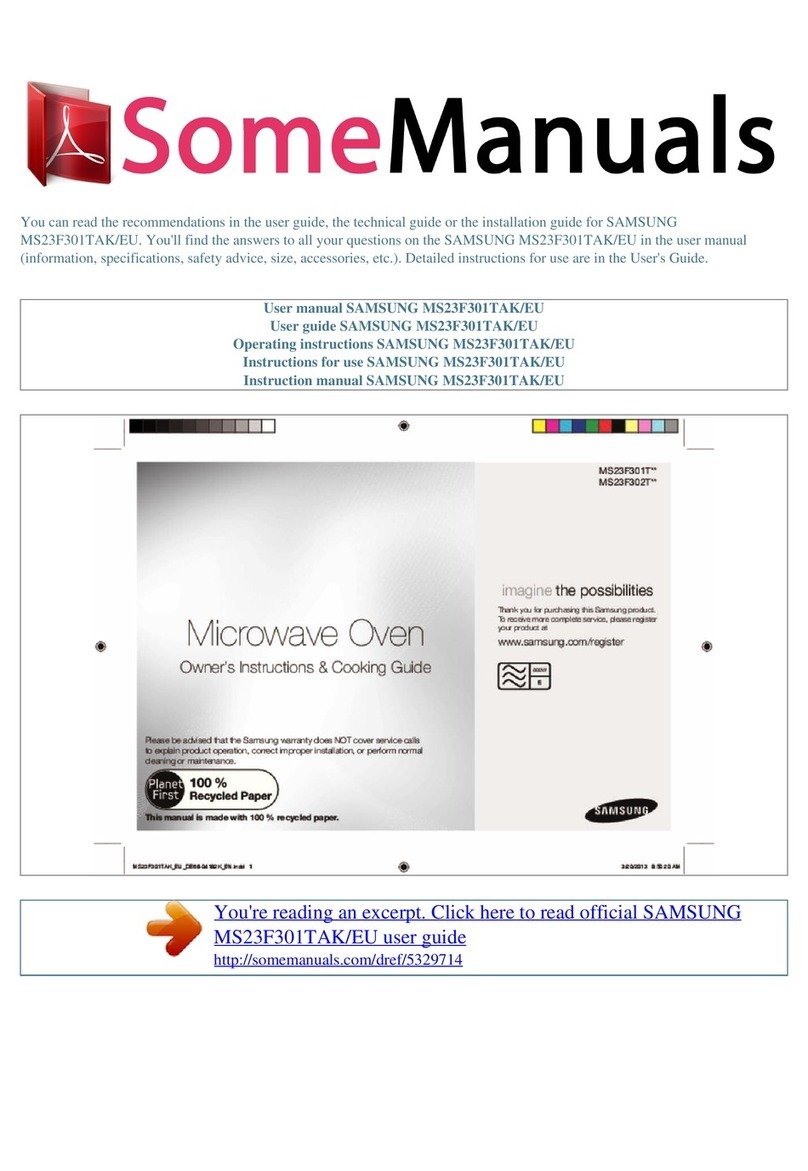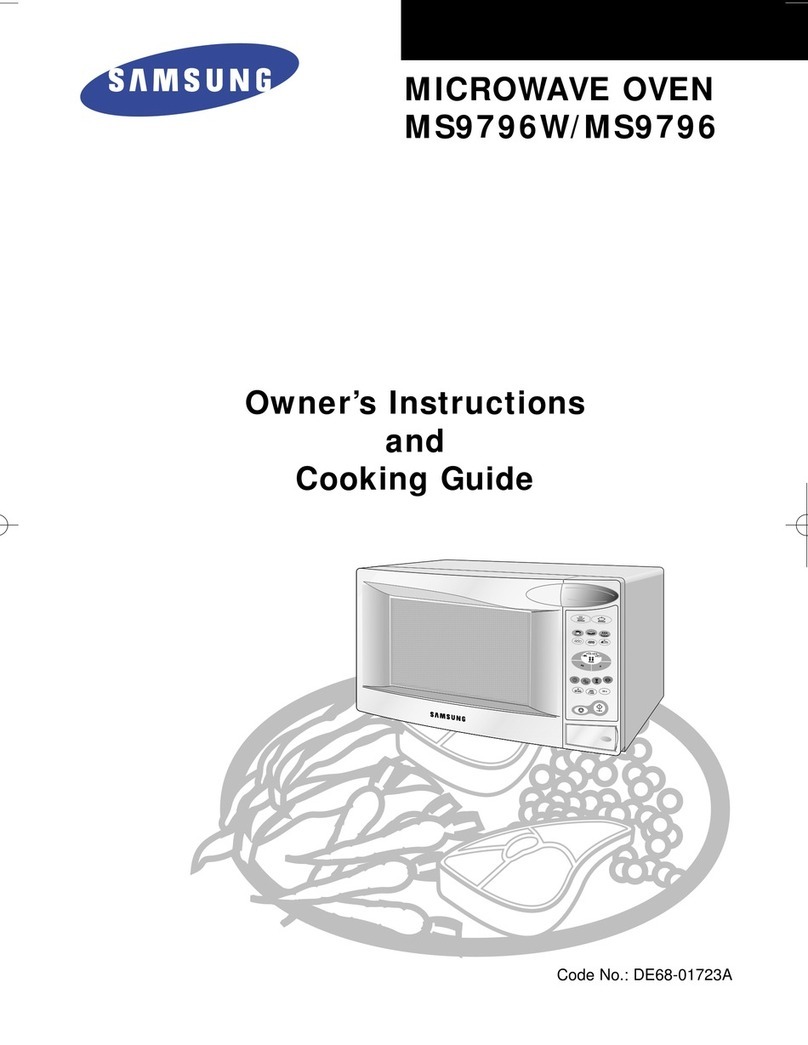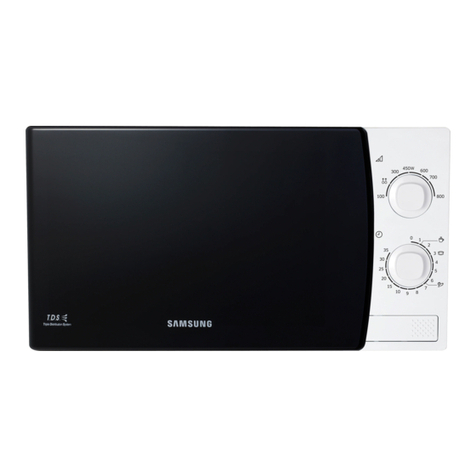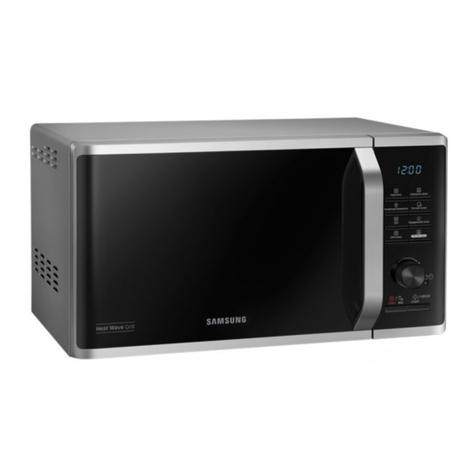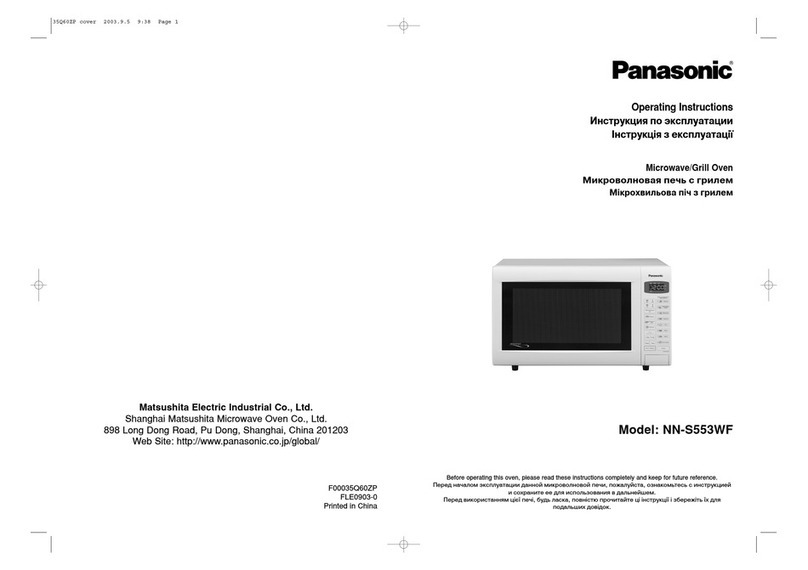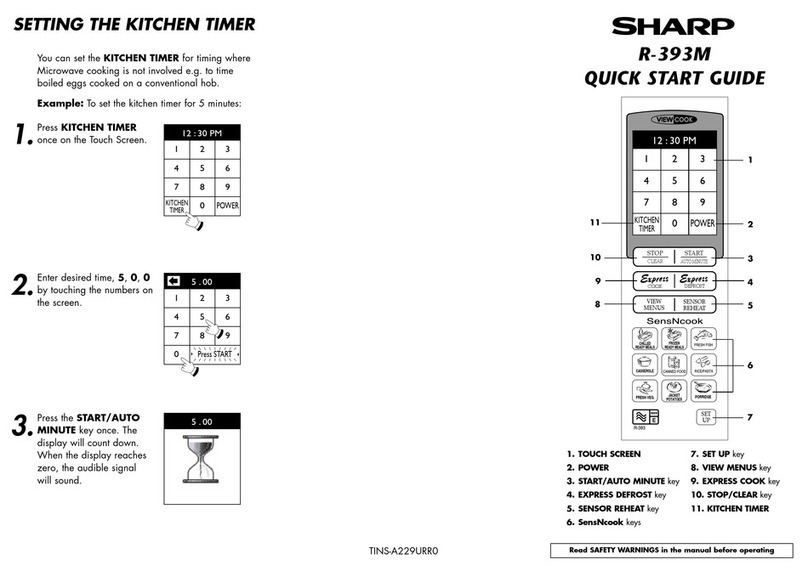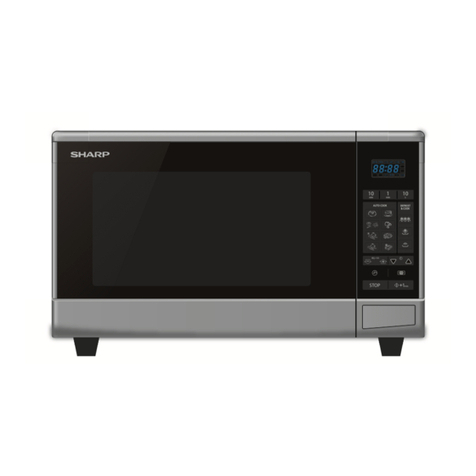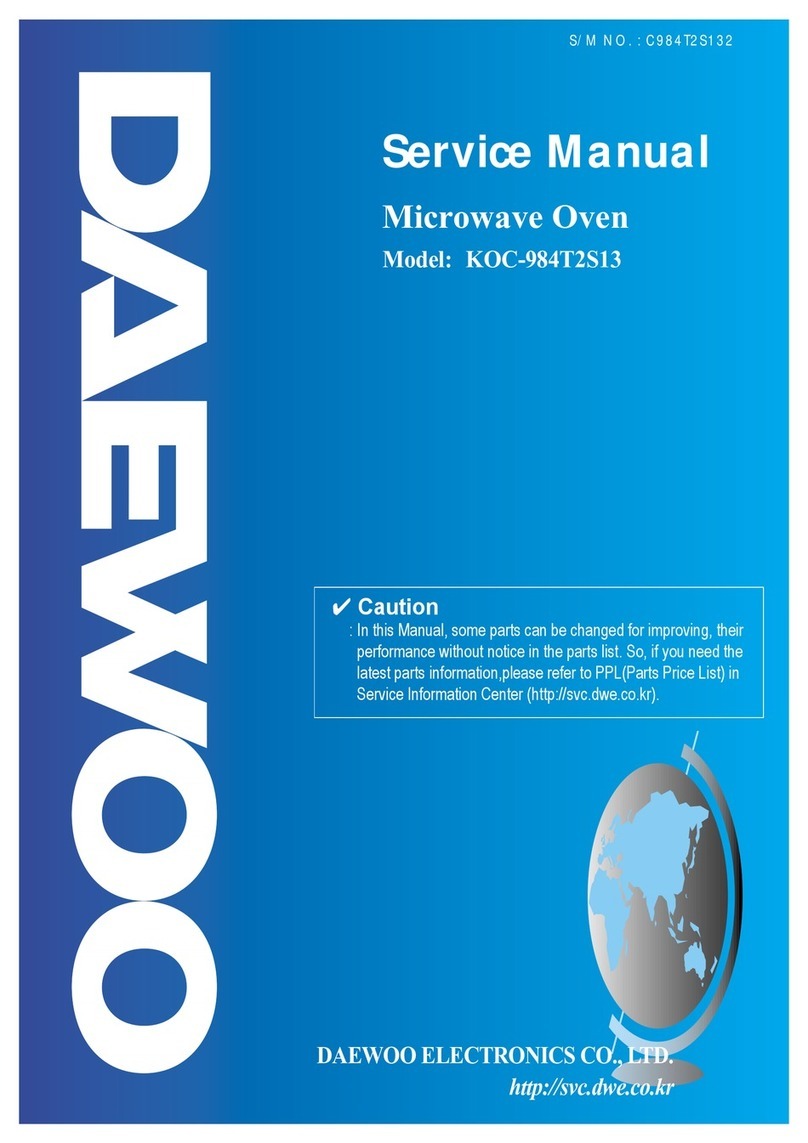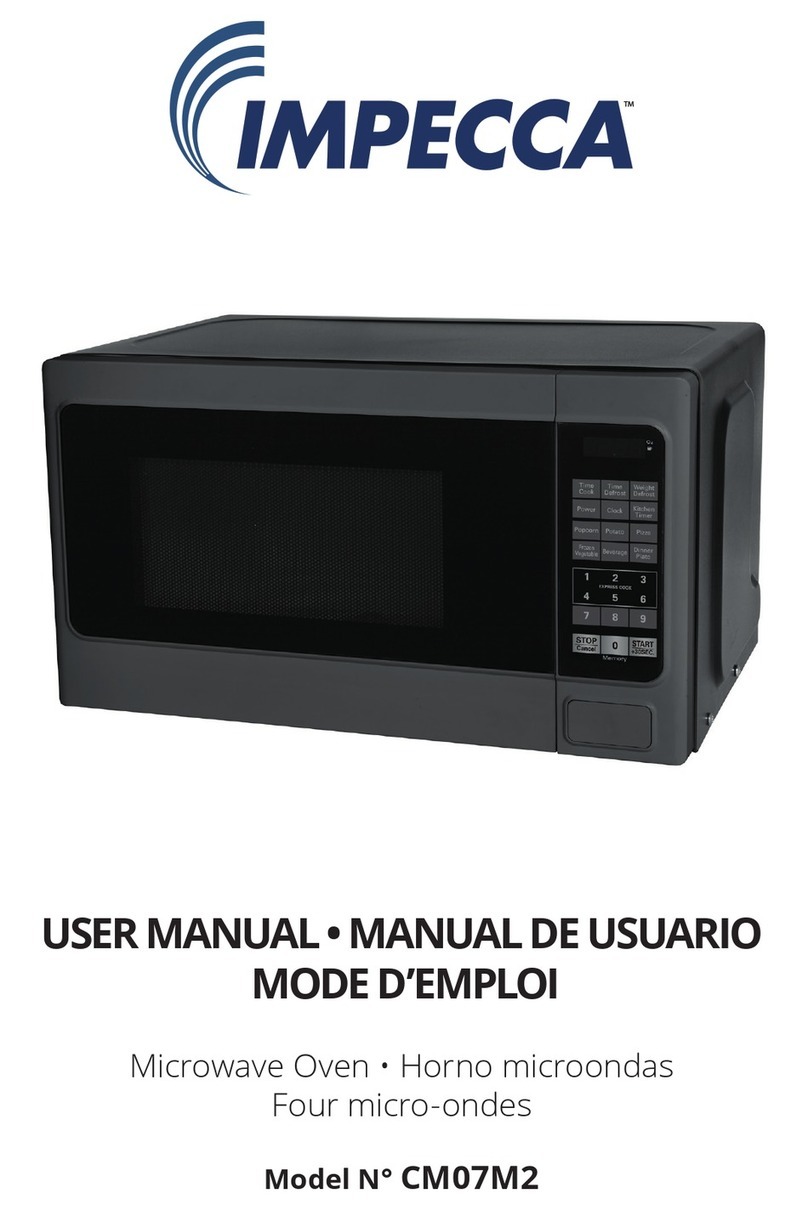
6 English
Important safety instructions
Important safety instructions
SAVE THESE INSTRUCTIONS
18. Liquids, such as water, milk, coffee, or tea can be overheated beyond the
boiling point without appearing to be boiling. Visible bubbling or boiling when
the container is removed from the microwave oven is not always present.
THIS COULD RESULT IN VERY HOT LIQUIDS SUDDENLY BOILING OVER WHEN
THE CONTAINER IS DISTURBED OR A SPOON OR OTHER UTENSIL IS INSERTED
INTO THE LIQUID. To reduce the risk of injury:
a. Do not overheat liquid.
b. Stir liquid both before and halfway through heating it.
c. Do not use straight-sided containers with narrow necks.
d. After heating, allow the container to stand in the microwave oven for a
short time before removing the container.
e. Use extreme care when inserting a spoon or other utensil into the
container.
19. Oversized foods or oversized metal utensils should not be inserted into the
microwave oven as they may cause a re or risk of electric shock.
20. Do not clean the microwave with a metal scouring pad. A piece of metal could
come off the pad, contact electrical parts, and cause an electric shock.
21. Do not put paper products into the oven when you are operating it in the
toaster mode.
22. Do not store any materials, other than manufacturer’s recommended
accessories, in this oven when not in use.
23. Do not cover the racks or any other part of the oven with metal foil. This will
cause the oven to overheat.
CAUTION
1. Clean Ventilating Hoods Frequently - Grease should not be allowed to
accumulate on the hood of the lter.
2. When aming foods under the hood, turn the fan on.
3. Use care when cleaning the vent-hood lter. Corrosive cleaning agents, such
as lye-based oven cleaner, may damage the lter.
7. As with any appliance, close supervision is necessary when it is used by
children. Keep children away from the door when opening or closing it as they
may bump themselves on the door or catch their ngers in the door.
• Hot contents can cause severe burns. do not allow children to use the
microwave.
8. Do not operate this appliance if it has a damaged cord or plug, if it is not
working properly, or if it has been damaged or dropped.
9. This appliance should be repaired or serviced only by qualied service
personnel. Contact the nearest authorized service facility for examination,
repair, or adjustment.
10. Do not cover or block any openings on the appliance.
11. Do not tamper with or make any adjustments or repairs to the door.
12. Do not store this appliance outdoors. Do not use this product near water, for
example, near a kitchen sink, in a wet basement, near a swimming pool, or
similar locations.
13. Do not immerse the cord or plug in water.
14. Keep the cord away from heated surfaces. (including the back of the oven).
15. Do not let the cord hang over the edge of a table or counter.
16. When cleaning surfaces of the door and oven that come together when the
door closes, use only mild, nonabrasive soaps, or detergents applied with a
sponge or soft cloth. Unplug the plug before cleaning.
17. To reduce the risk of re in the oven cavity:
a. Do not overcook food. Carefully attend the appliance when paper, plastic,
or other combustible materials are placed inside the oven to facilitate
cooking.
b. Remove wire twist-ties from paper or plastic bags before placing the bags
in the oven.
c. If materials inside the oven ignite, keep the oven door closed, turn the
oven off, and disconnect the power cord, or shut off the power at the fuse
or circuit breaker panel. If the door is opened, the re may spread.
d. Do not use the cavity for storage purposes. Do not leave paper products,
cooking utensils, or food in the cavity when not in use.
